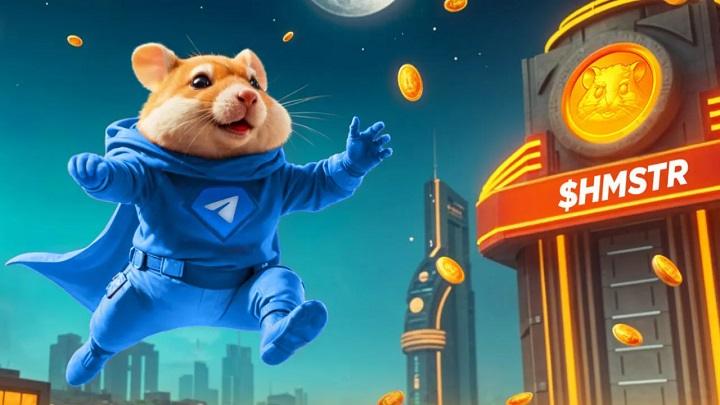Why Hamster Got So Much Hype but Didn’t Produce the Outcome People Expected
In the world of cryptocurrencies, hype and excitement can spread like wildfire. One such token that recently captured significant attention is Hamster (HAM). With its meme-inspired roots and a listing on Binance, many expected Hamster to skyrocket in value, following in the footsteps of earlier meme coins like Dogecoin and Shiba Inu. However, despite the initial buzz, Hamster didn’t quite meet the lofty expectations set by its community and investors. Here’s a closer look at why Hamster generated so much hype but ultimately fell short of delivering the outcome people hoped for.
The Hype: Why Hamster Caught Everyone’s Attention
- The Meme Coin Phenomenon: Hamster capitalized on the continued popularity of meme coins. Dogecoin, Shiba Inu, and others had already proven that with enough social media momentum and community engagement, a meme-based cryptocurrency could experience massive growth. The formula seemed simple: humorous branding, viral content, and a strong community could push a coin to new heights. Hamster aimed to replicate this.
- Binance Listing: The listing of Hamster on Binance was a significant milestone and created a wave of optimism. Getting listed on one of the largest crypto exchanges in the world gave Hamster an air of legitimacy and exposed it to millions of potential investors. The Binance listing alone fueled a surge of interest as people anticipated a price rally after such a major endorsement.
- Social Media and Influencers: Social media platforms like Twitter, Reddit, and Telegram played a major role in generating buzz around Hamster. Influencers and crypto enthusiasts pushed the narrative that Hamster was the “next big thing” in meme coins, often using the Binance listing as proof that it was a token worth watching. The power of online communities hyped the token to new levels.
- Community-Driven Nature: Hamster, like other meme coins, emphasized its decentralized and community-driven structure. Many investors were drawn to the idea that they could have a say in the token’s future and growth, leading to stronger emotional investment and viral campaigns.
The Reality: Why Hamster Didn’t Meet Expectations
Despite the enormous hype, Hamster didn’t live up to the bullish predictions of its early adopters. Several key factors contributed to this underperformance:
- Excessive Volatility and Speculation: Meme coins, by nature, are highly speculative assets, and Hamster was no different. Investors jumped in with the hope of quick gains, causing the price to surge rapidly. However, the same rapid rise led to a quick sell-off as early investors sought to lock in profits. The excessive price volatility scared off more cautious investors, and the token struggled to maintain momentum after the initial surge.
- Lack of Long-Term Utility: One of the main challenges Hamster faced was its lack of a clear, long-term utility or real-world use case. While community-driven projects can grow fast, they often need more than just hype to sustain that growth. Tokens like Dogecoin and Shiba Inu eventually developed ecosystems that gave them additional value, but Hamster has yet to define how it will be used beyond speculation.Without a solid roadmap or meaningful utility, many investors began to question the long-term viability of Hamster, leading to hesitation and ultimately a decline in interest.
- Overreliance on the Binance Listing: The Binance listing created a lot of buzz, but it also set unrealistic expectations. Many investors assumed that a Binance listing would lead to an immediate and sustained price surge, but listings alone are not enough to drive a token’s long-term success. Without sustained development, utility, or market demand, the excitement around the listing faded quickly, and Hamster’s price did not experience the rally many had hoped for.
- Market Conditions: Hamster’s debut came at a time when the cryptocurrency market was going through fluctuating conditions. Bearish market trends, increased regulatory scrutiny, and waning interest in meme coins created a challenging environment for new tokens. Even with Binance’s support and community hype, these market headwinds worked against Hamster, dampening its potential for success.
- Short-Term Focus of Investors: Many investors who bought into Hamster were looking for quick gains rather than long-term investment. When the price didn’t surge as quickly or as high as expected, many investors panicked and sold off their holdings. This sell-off drove the price lower, and as more investors exited, the downward pressure increased, creating a vicious cycle that pushed Hamster’s value even further down.
Lessons from Hamster’s Hype Cycle
- Hype Isn’t Everything: Hamster’s story is a reminder that hype can only carry a token so far. While a strong community and viral marketing can drive interest, long-term success requires substance beyond social media buzz. Investors should be cautious about jumping into projects based solely on hype and should evaluate a token’s long-term potential and utility.
- Listings Don’t Guarantee Success: While being listed on a major exchange like Binance is a positive sign, it doesn’t guarantee a token’s long-term growth. A listing can provide liquidity and exposure, but sustainable growth requires ongoing development, partnerships, and real-world use cases.
- Be Wary of Meme Coin Volatility: Meme coins are known for their extreme price volatility, and Hamster was no exception. Investors should be aware of the risks associated with such coins and be prepared for the possibility of large price swings. Meme coins can provide quick profits, but they can also lead to significant losses.
- The Importance of Utility: The most successful cryptocurrencies are those that provide value beyond speculation. Without a clear utility or purpose, tokens like Hamster will struggle to maintain long-term interest. Investors should look for projects with strong development teams, meaningful roadmaps, and real-world use cases.
Conclusion
Hamster is a prime example of how hype, while powerful, can only sustain a cryptocurrency for so long. The initial excitement surrounding its launch and Binance listing created a wave of optimism, but ultimately, Hamster struggled to meet the sky-high expectations of its community. Factors such as extreme volatility, lack of utility, and short-term investor focus played a significant role in its underperformance.
For those considering future investments in meme coins like Hamster, it’s crucial to balance the excitement with a realistic understanding of the risks and challenges. While the allure of quick gains can be tempting, sustainable success in the crypto world often requires more than just viral marketing and social media buzz.






